MEA Demand Response Management Systems Market Size
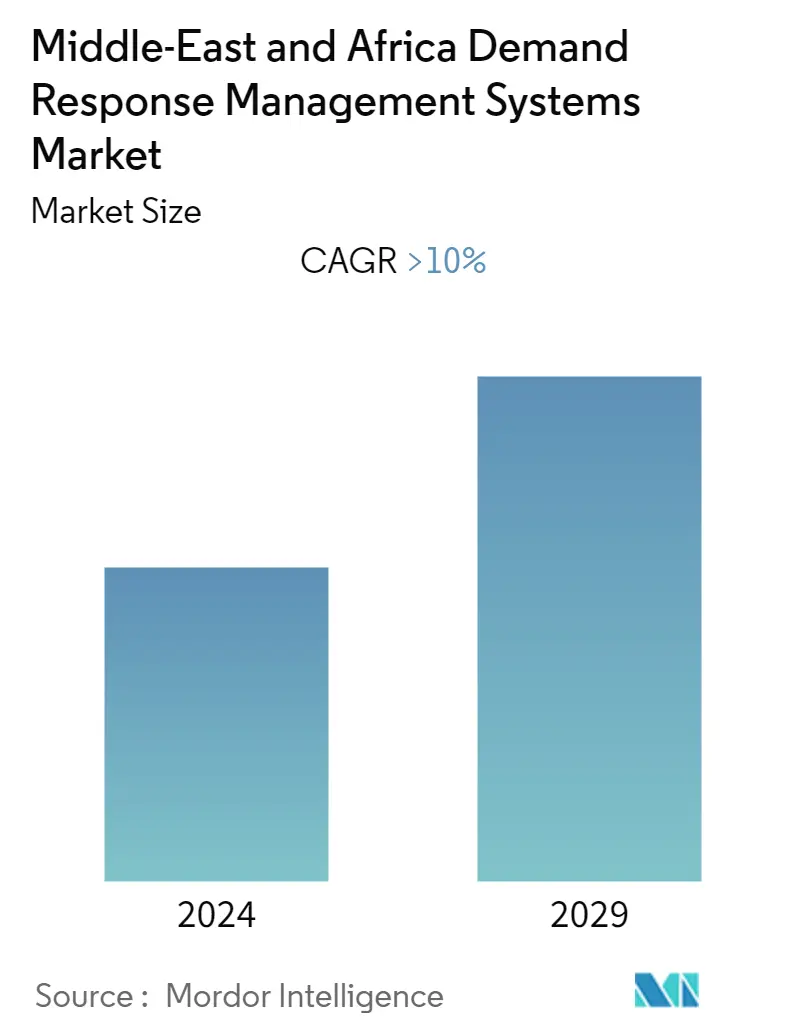
| Study Period | 2021 - 2029 |
| Base Year For Estimation | 2023 |
| Forecast Data Period | 2024 - 2029 |
| Historical Data Period | 2021 - 2022 |
| CAGR | 10.00 % |
| Market Concentration | Medium |
Major Players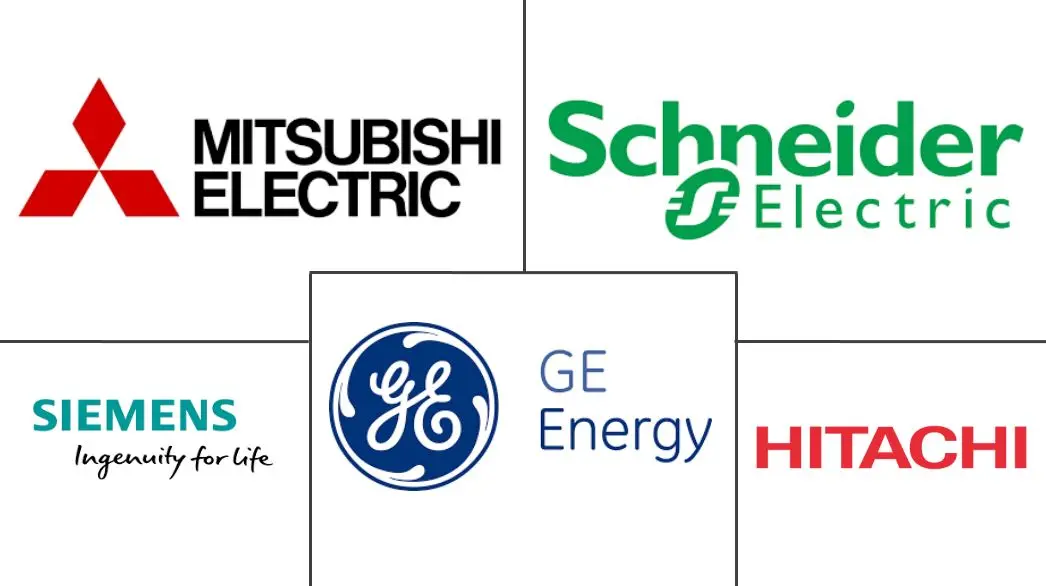
*Disclaimer: Major Players sorted in no particular order |
MEA Demand Response Management Systems Market Analysis
The Middle-East and Africa demand response management systems market is expected to register a CAGR greater than 9.5% during the forecast period.
The market was negatively impacted by COVID-19 in 2020. However, it has reached pre-pandemic levels.
- Most of the demand response action today is in the commercial and industrial sectors. Moreover, technology giants of the region are leading the market space, with smaller companies supporting them with constant innovations and smarter software products. This scenario acts as a driver for the adoption of demand response management systems for utilities and customers.
- On the other note, privacy concerns regarding the threat to consumers' data through hacking are expected to hinder the market's growth.
- The integration of smart technologies in the existing grid structure is expected to create an ample amount of opportunities for the market players in the coming years.
- The United Arab Emirates is expected to be the largest market in the region, owing to many upcoming renewable and smart grid projects to decrease the share of fossil fuel in power generation. Furthermore, the uncertainty in power generation through renewables may propel the demand for DRMS in the country.
MEA Demand Response Management Systems Market Trends
This section covers the major market trends shaping the MEA Demand Response Management Systems Market according to our research experts:
Automated Demand Response System to Grow at the Fastest Rate
- Industrial demand response is a dynamic energy infrastructure management program designed to support the stability of the electricity grid, as well as meet the globally growing demand for energy with the assistance of large and very large energy users in both the industrial and commercial sectors who agree to switch off certain production processes or turn down certain electrical loads during periods of peak demand.
- Demand-side management is the need of the hour for any grid. With a rise in smart grid technologies and automated demand response systems, DRMS is a key demand-side management strategy that is expected to provide a cost-effective alternative to traditional supply-side solutions to address the growing electricity demand during peak load or when prices are high.
- Additionally, as grid integration of renewable energy is growing rapidly, it is expected to mandate smart grids to provide grid-firming capacity while integrating energy generation from variable sources such as wind and solar.
- As of 2021, according to International Renewable Energy Agency, the Middle East had a total installed renewable capacity of nearly 24 GW, up from 13.6 GW in 2012, and Africa had a total installed renewable capacity of 55.7 GW from 28.45 GW in 2012.
- Renewable energy capacities are expected to grow even further. Such large-scale increase in renewable energy capacity has facilitated the requirement for new automated systems to stabilize grid operation.
- Therefore, the Middle-East and African demand response management systems market is expected to grow due to the ability of the automated demand response system to control electricity consumption, allowing customers to manage energy consumption at times of peak demand automatically.
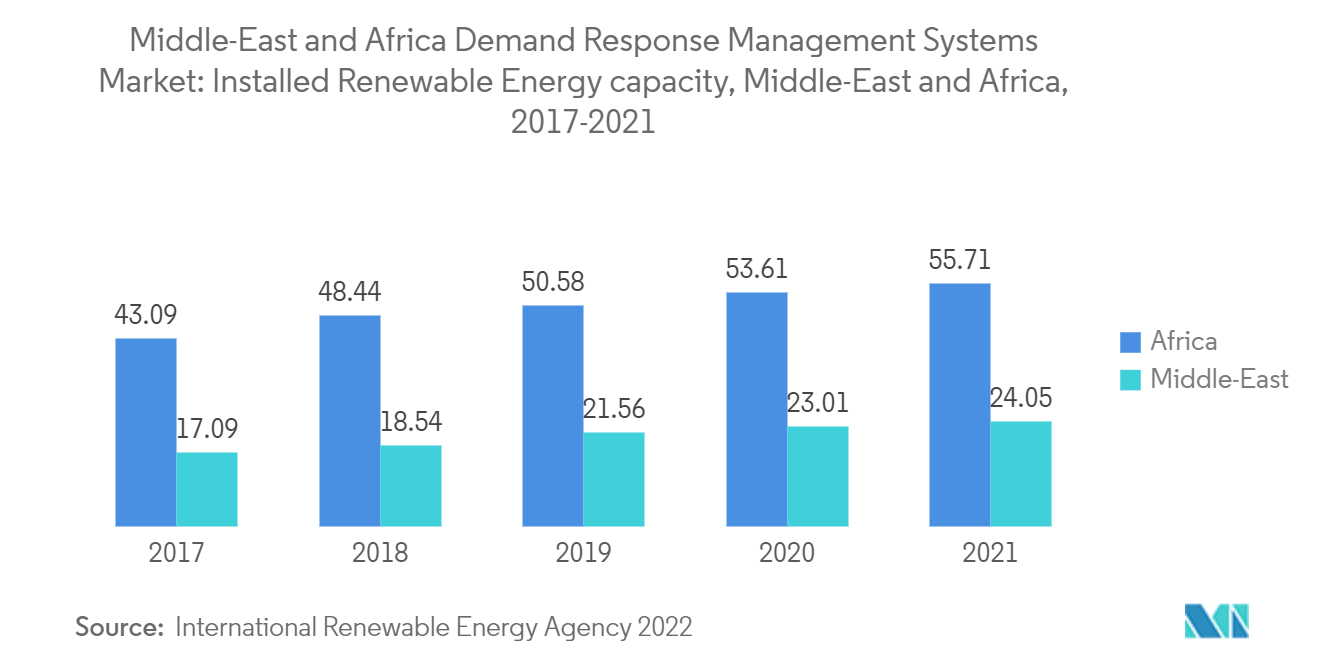
United Arab Emirates to Dominate the Market
- The market for demand response management systems in the Middle-East and African region is expected to witness significant growth, majorly in the United Arab Emirates, during the forecast period.
- The United Arab Emirates has 7% of the global proven oil reserves, i.e., about 105 billion barrels and 73 trillion cubic feet of conventional gas.
- As of 2021, the total electricity generation in the country was about 139.4 TWh. Natural gas-fired power plants majorly power the country. In 2021, about 98% of electricity was generated by natural gas-fired plants. Moreover, the share of oil and natural gas in primary energy consumption in the same year was staggering at 98.87%. However, the country has committed to producing at least 25% by 2030.
- The peak electricity demand has been increasing on account of high disposable incomes, hot summers, and the widespread use of electrical appliances in the country. The country has experienced shortages in power availability due to rapid economic growth, a situation that has ebbed in recent years. To manage this mismatch in electricity demand and supply, large customers were instructed to undertake administratively rationed, uncompensated load reductions to reduce peak demand.
- In addition, the country has focused on developing world-class power infrastructure to become a power exporter to other GCC nations. DRMS has the potential to aid the United Arab Emirates in optimizing its consumption and improving the efficiency of allocating unused energy to export.
- The country has focused on massive capacity addition in the power sector by developing nuclear and solar power plants. It is likely to become the first MENA country to produce solar power on such a large scale. Supported by an increase in capacity and the integration of renewable in the energy mix, the market outlook for DRMS is estimated to be positive over the coming years.
- In November 2022, the Abu Dhabi Department of Economic Development (ADDED) expanded the Energy Tariff Incentive Programme (ETIP 2.0) by offering preferential rates for gas and electricity to the industrial sector based on eligibility criteria that include economic impact, Emiratisation rate, and energy management efficiency. Such measures are expected to spur industry players into investing in better demand response management systems to improve energy efficiency during the forecast period.
- Therefore, factors such as increasing efforts to modernize the power sector across the country, investments, and government policies, are expected to drive the market studied during the forecast period.
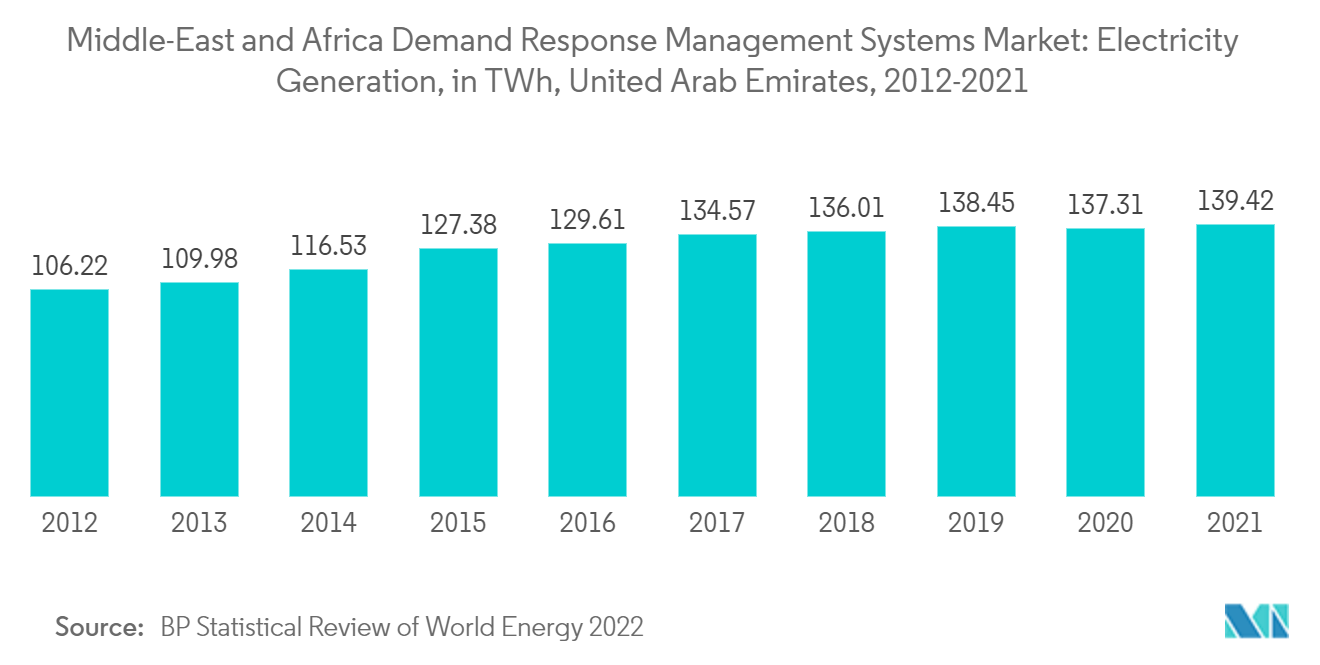
MEA Demand Response Management Systems Industry Overview
The Middle-East and Africa demand response management systems market is moderately fragmented due to many companies operating in the industry. The key players in this market (in no particular order) include Schneider Electric Inc., Siemens, Hitachi Ltd, Mitsubishi Electric Corporation, GE Energy, and ABB (Ventyx).
MEA Demand Response Management Systems Market Leaders
-
Schneider Electric
-
Siemens AG
-
Hitachi Ltd
-
Mitsubishi Electric Corporation
-
General Electric Company
*Disclaimer: Major Players sorted in no particular order
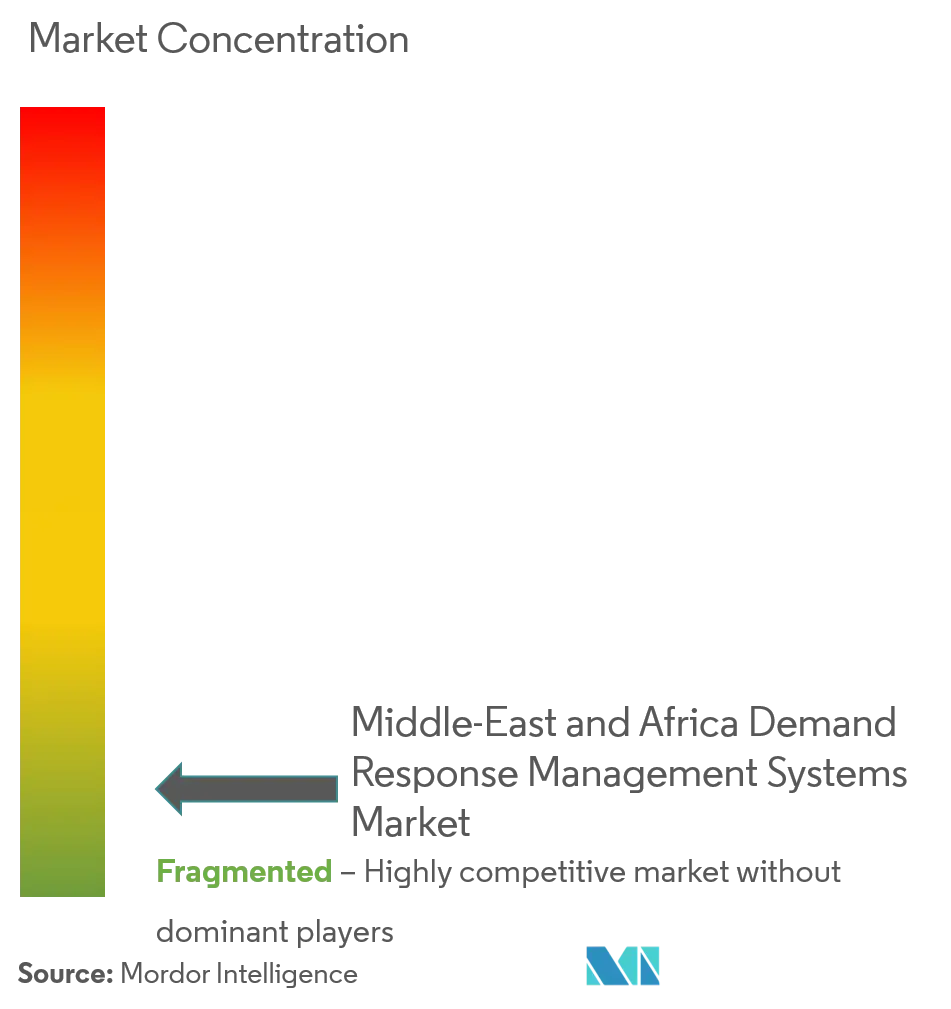
MEA Demand Response Management Systems Market News
- Nov 2022: The Abu Dhabi Department of Economic Development (ADDED) expanded the Energy Tariff Incentive Programme (ETIP 2.0) by offering preferential rates for gas and electricity to the industrial sector based on eligibility criteria that include economic impact, Emiratisation rate, and energy management efficiency.
- Apr 2022: The Ministry of Energy and Infrastructure launched a database to monitor energy and water consumption in the UAE government buildings. The database is part of the initiatives of the National Water and Energy Demand Management Programme (NWEDMP). It will help gauge energy and water consumption in government buildings and identify buildings with the highest consumption rates to develop rationalization programs that help minimize carbon emissions and operating costs.
MEA Demand Response Management Systems Market Report - Table of Contents
1. INTRODUCTION
- 1.1 Scope of Study
- 1.2 Market Definition
- 1.3 Study Assumptions
2. RESEARCH METHODOLOGY
3. EXECUTIVE SUMMARY
4. MARKET OVERVIEW
- 4.1 Introduction
- 4.2 Market Size and Demand Forecast in USD billion, till 2027
- 4.3 Recent Trends and Developments
- 4.4 Government Policies and Regulations
-
4.5 Market Dynamics
- 4.5.1 Drivers
- 4.5.2 Restraints
- 4.6 Supply Chain Analysis
-
4.7 Porter's Five Forces Analysis
- 4.7.1 Bargaining Power of Suppliers
- 4.7.2 Bargaining Power of Consumers
- 4.7.3 Threat of New Entrants
- 4.7.4 Threat of Substitute Products and Services
- 4.7.5 Intensity of Competitive Rivalry
5. MARKET SEGMENTATION
-
5.1 Type
- 5.1.1 Conventional Demand Response
- 5.1.2 Automated Demand Response
-
5.2 Geography
- 5.2.1 United Arab Emirates
- 5.2.2 Saudi Arabian
- 5.2.3 South Africa
- 5.2.4 Res of Middle-East and Africa
6. COMPETITIVE LANDSCAPE
- 6.1 Mergers & Acquisitions, Joint Ventures, Collaborations, and Agreements
- 6.2 Strategies Adopted by Leading Players
-
6.3 Company Profiles
- 6.3.1 Schneider Electric
- 6.3.2 Siemens AG
- 6.3.3 Alstom SA
- 6.3.4 Eaton Corporation PLC
- 6.3.5 Enel SpA
- 6.3.6 ABB Ltd
- 6.3.7 General Electric Company
- 6.3.8 Mitsubishi Electric Corporation
- 6.3.9 Saudi Electricity Company
- *List Not Exhaustive
7. MARKET OPPORTUNITIES AND FUTURE TRENDS
** Subject To AvailablityMEA Demand Response Management Systems Industry Segmentation
A demand response system (also known as a load response or DRS) is for end-use customers to reduce their electricity use in response to power grid needs, economic signals from a competitive wholesale market, or special retail rates.
- The Middle-East and Africa demand response management systems market is segmented by type, conventional demand response, and automated demand response. The report also covers the market size and forecasts for the market across the major countries. The market size and forecasts for each segment have been done in USD billion.
| Type | Conventional Demand Response |
| Automated Demand Response | |
| Geography | United Arab Emirates |
| Saudi Arabian | |
| South Africa | |
| Res of Middle-East and Africa |
MEA Demand Response Management Systems Market Research FAQs
What is the current Middle-East and Africa Demand Response Management Systems Market size?
The Middle-East and Africa Demand Response Management Systems Market is projected to register a CAGR of greater than 10% during the forecast period (2024-2029)
Who are the key players in Middle-East and Africa Demand Response Management Systems Market?
Schneider Electric , Siemens AG, Hitachi Ltd , Mitsubishi Electric Corporation and General Electric Company are the major companies operating in the Middle-East and Africa Demand Response Management Systems Market.
What years does this Middle-East and Africa Demand Response Management Systems Market cover?
The report covers the Middle-East and Africa Demand Response Management Systems Market historical market size for years: 2021, 2022 and 2023. The report also forecasts the Middle-East and Africa Demand Response Management Systems Market size for years: 2024, 2025, 2026, 2027, 2028 and 2029.
MEA Demand Response Management Systems Industry Report
Statistics for the 2024 MEA Demand Response Management Systems market share, size and revenue growth rate, created by Mordor Intelligence™ Industry Reports. MEA Demand Response Management Systems analysis includes a market forecast outlook 2029 and historical overview. Get a sample of this industry analysis as a free report PDF download.



